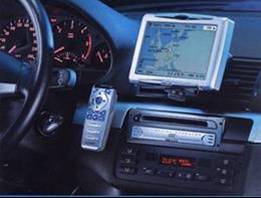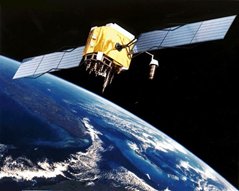Merging Multiple Positioning Systems
Finding your way through Australian skyscrapers and open pit mines should no longer be a challenge thanks to the latest integration of two global navigation satellite systems (GNSS).
After combining two satellite systems for the first time in 2012, Curtin University spatial scientist Professor Peter Teunissen, in conjunction with the Cooperative Research Centre for Spatial Information (CRCSI), has now taken the integration process a step further.
Professor Teunissen said mixing the established Global Positioning System (GPS) with the newest satellite system in the sky, the Chinese-developed Beidou, would have significant advantages because Beidou satellites were constantly crossing Australian skies.
“Have you ever tried to navigate in a city riddled with towering skyscrapers using a smartphone, but failed when the dot on the inbuilt navigation system can’t seem to pin you down in the right location?” Professor Teunissen said.
“This is because the satellites the system is using to find your location are positioned at a low angle in the sky and their signals are blocked by the skyscrapers.
“By combining GPS with Beidou we are making use of Beidou’s 14 new satellites that cross our sky at a high angle, increasing satellite availability, improving positioning capability and ultimately creating a system that is perfect for both urban and mining environments.”
Professor Teunissen said Beidou was still in development, along with a growing number of next-generation GNSSs from several countries around the world. By 2016, more than 100 GNSS satellites will be in operation, resulting in a broader and more diverse network.
Beidou plans to have 35 satellites fully operational by 2020.
“The emergence of these new GNSSs, together with the linking of different systems, has enormous potential for improving the accuracy, integrity and efficiency of positioning worldwide, enabling much more reliable data,” Professor Teunissen said.
A recent report on the benefits of precise positioning services, by ACIL Allen Consulting, projected a boost to Australia’s GDP of up to $13.7 billion by 2020. Most benefit would be reaped in the mining, agricultural, construction and surveying industries.
This research will be published in the Journal for Spatial Sciences, titled First combined COMPASS/BeiDou and GPS positioning results in Australia by R. Odolinski, PJG Teunissen and D. Odijk.




